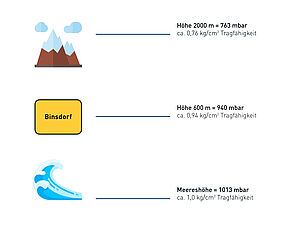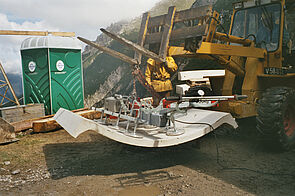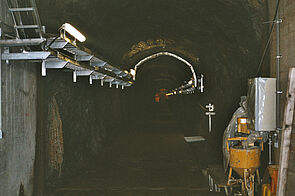At lofty heights: vacuum lift transports tunnel elements in the Alps
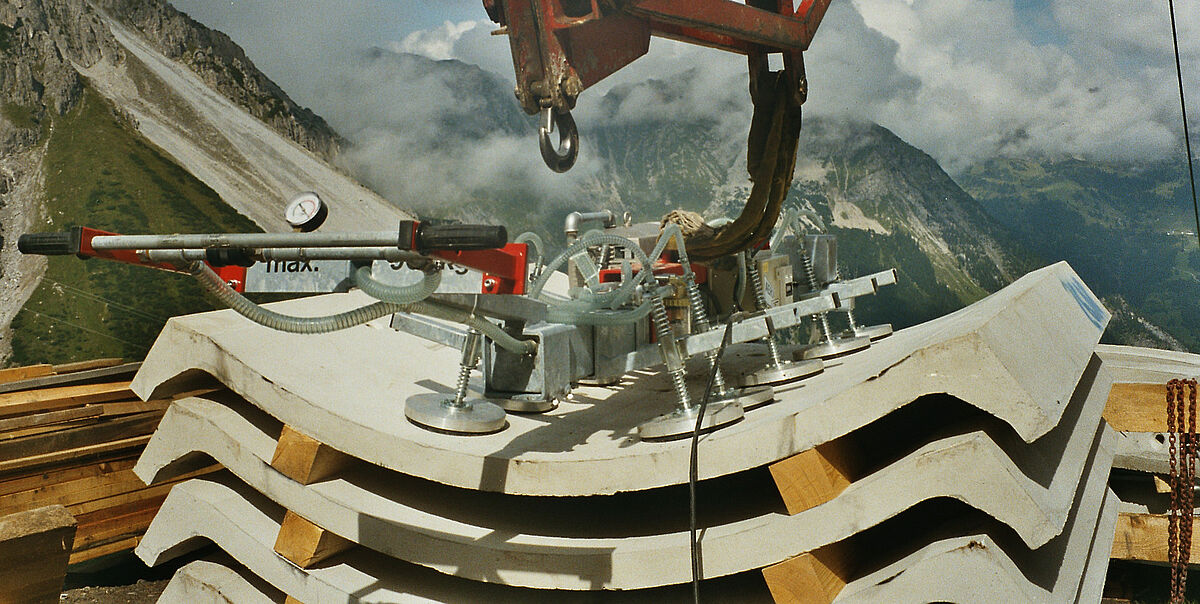
Atmospheric pressure and vacuum in the mountains
Our earth is surrounded by a layer of air several kilometres thick, the weight of which presses on the earth's surface as an air mass. This pressure is also called atmospheric pressure. If a negative pressure is generated, the atmospheric pressure is a potential source of energy. And this is exactly what vacuum lifting devices use. Due to a high differential pressure, the transport piece is pressed against the suction plate by the atmospheric pressure and "sticks" to the device.
Experienced hikers know that the air becomes thinner the closer you get to the top of the mountain. Transferred to the world of vacuum, this means that the atomic pressure decreases as the altitude increases. The diagram shows that at sea level the atmospheric pressure is 1013 mbar. From 2000 m it drops to 736 mbar. What effects does this have on a vacuum lifter? The maximum differential pressure decreases. This means that a higher vacuum must be generated in order to reach the same vacuum level. In conclusion, this means that the maximum achievable holding force of the vacuum cups in the mountains drops significantly: up to 1.23% per 100m height!
These circumstances required other calculation values as a basis for the design of the device. Accordingly, more safety elements were installed and a particularly powerful vacuum pump was selected.
Choosing the right components
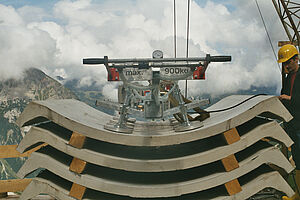
But not only the height of the site is a complicated task - also the unpredictable and rough conditions in the mountains require a well thought-out selection of the vacuum components. For example, robust seals had to be installed to withstand extreme weather conditions such as cold, rain, snow as well as sun rays and heat.
The main and cross beams were made of hot-dip galvanized steel to provide long-term corrosion protection. The generously dimensioned vacuum accumulator with non-return valve and safety manual slide valve also ensured a high level of safety when handling the transported goods on the construction site.
At the same time, the material of the suction cups had to be relatively elastic in order to optimally adapt to the uneven surface of the concrete. In order to be able to grip the curved shape of the elements, the suction plates together with the traverses were mounted at an appropriate angle.
Special construction fulfilled all requirements
After the transported goods had been safely sucked in, the vacuum lifter and the material were attached to a forklift truck and transported into the tunnel to the assembly site. This unique solution therefore mastered all the challenges with flying colours: the material was transported gently and the risk of injury to the employees was significantly reduced. In addition, the concrete parts were laid with greater precision, saving an enormous amount of time. A real all-round talent - even under difficult conditions!
You have a similar application?
We are happy to advise you personally to find your individual special solution.
Request Callback Now or Request Direct Quote
In the Austrian Alps, heavy concrete shells were to be transported from the storage site to the assembly site during the construction of water tunnels. Previous methods with slings or on a forklift truck exposed employees to the risk of injury and the material to the risk of damage. A better solution was needed.
This application presented the experienced AERO-LIFT engineers with a number of challenges, because physics sets natural limits to vacuum technology. So first of all, back to the basics
